 |
 |
||

> NASLOVNA STR. > RATARSTVO > GOVEDARSTVO > SVINJOGOJSTVO > PERADARSTVO > VOĆE I POVRĆE > ZAŠTITA BILJA > EKOLOŠKA POLJ. > MEHANIZACIJA > ZAKONI I PROPISI 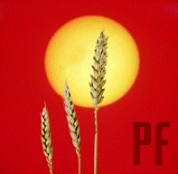 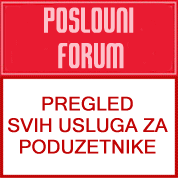 > Knjige (Literatura) > Analiza tla > Veterina > Investicije u poljoprivredi i izrada poslovnih planova > Poslovna baza podataka > Agro marketing > Web poljoprivreda > OPG u Hrvatskoj > Info prilozi > Adresar i imenik > Poslovni web katalog > Posebne ponude i akcije > Kontakt adrese IZRADA WEB STRANICA Novo u ponudi za poduzetnike: samostalna izrada web stranica. U svega nekoliko minuta, kreirajte vrhunsku web stranicu uz pomoć našeg CMS-a. Moderni dizajni za Vašu web stranice. Korištenje administracije slično je kao korištenje Facebooka, ne zahtjeva znanje kodiranja i programiranja. Započnite pisati, dodajte nekoliko fotografija te ostvarite svoju prvu web stranicu u trenu. Mijenjajte dizajn svoje stranice s lakoćom. Kreirajte web stranicu svoje tvrtke, web stranicu obrta, web stranicu udruge, započnite pisati blog... Mobilna responzivnost web stranica predstavlja prilagođavanje web stranice svim uređajima (mobitel, tablet, računalo) i mora se implementirati na sve stranice. SEO optimizacija će omogućiti vašoj web stranici da se prikazuje u prvih deset rezultata na tražilicama (poput Google-a) za pojmove koje pretražuju vaši budući kupci. Dizajn responzivnih web stranica, izrada CMS stranica, ugradnja web shopa, implementacija plaćanja karticama, ugradnja Google analyticsa, siguran hosting, prijava na tražilice, reklama na društvenim mrežama, ugradnja kontakt formulara za upite sa web stranica... Iskoristite ponudu: izrada web stranica i hosting po najnižim cijenama. Besplatna prijava na tražilice, besplatni e-mail, besplatna podrška za internet marketing... Ažurirano: 7. 1. 2026.
|
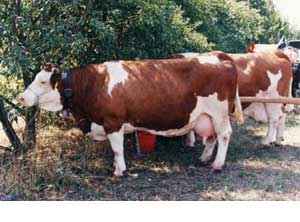 The Simmental is among the oldest and most widely distributed of all breeds of cattle in the world. Although the first herd book was established in the Swiss Canton of Berne in 1806, there is evidence of large, productive red and white cattle found much earlier in ecclesiastical and secular property records of Western Switzerland. These red and white animals were highly sought because of their "rapid growth development; outstanding production of milk, butter, and cheese; and for their use as draught animals." they were known for their imposing stature and excellent dairy qualities. As early as 1785, the Swiss Parliament limited exports because of a shortage of cattle to meet their own needs. The Swiss "Red and White Spotted Simmental Cattle Association" was formed in 1890. Since its origin in Switzerland, the breed has spread to all six continents. Total numbers are estimated between 40 and 60 million Simmental cattle world-wide. More than half of these are in Europe. The spread was gradual until the late 1960s. Records show that a few animals were exported to Italy as early as the 1400s. During the 19th century, Simmental were distributed through most of Eastern Europe, the Balkans, and Russia, ultimately reaching South Africa in 1895. Guatemala imported the first Simmental into the Western Hemisphere in 1897, with Brazil following suite in 1918 and Argentina in 1922. There are reports from a variety of sources indicating that Simmental cattle arrived in the United States before the turn of the century. Simmental were reported as early as 1887 in Illinois, according to one source; in 1895 in New Jersey; and in both New York and New Mexico around the 1916 to 1920 period. An ad in an 1896 issue of the Breeder's Gazette, published in Chicago, also made reference to "Simmenthal" cattle. However, those early imports did not capture the attention of the American cattleman and the Simmental influence died quietly away until the late 1960s. 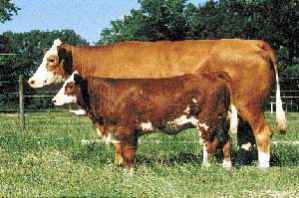 The breed made its most recent appearance in North America when a Canadian, named Travers Smith, imported the famed bull "Parisien" from France in 1967. Semen was introduced into the United States that same year, with the first half-blood Simmental calf born in February of 1968. The American Simmental Association was formed in October of 1968. Simmental spread to Great Britain, Ireland, and Norway in 1970 and to Sweden and other Northern European countries shortly thereafter. The first purebred bull imported into the United States in 1971 and Australia received Simmental semen and live animals in 1972. The World Simmental Federation was formed in 1974. In 1976 Simmental cattle were shipped to the Peoples' Republic of China. The breed is known by a variety of names, including "Fleckvieh" in Germany, "PieRouge", "Montbeliard", and "Abondance" in France; and "Peseta Rosa" in Italy. The Simmental name is derived from their original location, the Simme Valley of Switzerland. In German, Thal or Tal means valley, thus the name literally means "Simme Valley". The amazing growth of Simmental cattle in North America is really a reflection of what has already occurred in most agricultural countries of the world. Presently, the American Simmental Association registered about 80,000 cattle annually into the Simmental and Simbrah herdbooks. The Association ranks among the top four of the U.S. beef breed associations in annual registrations. German Fleckvieh (Beef Simmental) 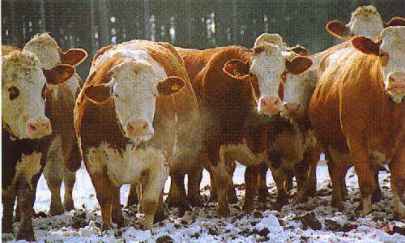 Bred as dual purpose animals, German Fleckvieh are increasingly becoming established in the field of suckler herds. A dominantly transmitted white head is the distinguishing feature of this breed. A favourable profitability is achieved by large feed intake capacity combined with good carcass gain, regular fertility, calving ease, rapid growth and adaptability. The suckling cows` high milk yields are prerequisite for the calves` high weaned off weights. Daily gains of at least 1.400 g for male and 1.150 g for female weaners are striven for. Special emphasis is put on best muscularity, particularly at the valuable body parts, on the best possible frame and on quality udders. The trait genetic polledness is an important breeding goal. Since 1987, polled bulls are thoroughly tested regarding polledness, easy calving, beef and milk performance within the scope of a limited AI use. Stature: females: 138 - 142 cm bulls: 148 - 156 cm Live weight: females: 700 - 850 kg bulls: 1.100 - 1.300 kg Holstein 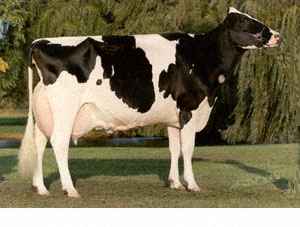 Origin of the Breed The Holstein cow originated in Europe. The major historical developement of this breed occured in what is now the Netherlands and more specifically in the two northern provices of North Holland and Friesland which lay on either side of the Zuider Zee. The original stock were the black animals and white animals of the Batavians and Friesians, migrant European tribes who settled in the Rhine Delta region about 2,000 years ago. For many years, Holsteins were bred and strictly culled to obtain animals which would make best use of grass, the area's most abundant resource. The intermingling of these animals evolved into an efficient, high-producing black-and-white dairy cow. Imports to America After the New World was settled, and markets began to develop for milk in America, dairy breeders turned to Holland for their seed stock. Winthrop Chenery, a Massachusetts breeder, purchased a Holland cow from a Dutch sailing master who landed cargo at Boston in 1852. The cow had furnished the ship's crew with fresh milk during the voyage. She proved to be such a satisfactory producer, that Chenery made later importations of Holsteins in 1857, 1859 and 1861. Many other breeders soon joined the race to establish Holsteins in America. After about 8,800 Holsteins had been imported, cattle disease broke out in Europe and importation ceased. Americans Build Their Own Breed In the late 1800's there was enough interest among Holstein breeders to form associations for the recording of pedigrees and maintenance of herdbooks. These associations merged in 1885 to found the Holstein-Friesian Association of America, the Holstein Association. Characteristics of Holsteins Holsteins are most quickly recognized by their distinctive color markings and outstanding milk production. Physical Characteristics Holsteins are large, stylish animals with color patterns of black and white or red and white. A healthy Holstein calf weighs 90 pounds or more at birth. A mature Holstein cow weighs about 1500 pounds and stand 58 inches tall at the shoulder. Holstein heifers can be bred at 15 months of age, when they weigh about 800 pounds. It is desirable to have Holstein females calve for the first time between 24 and 27 months of age. Holstein gestation is approximately nine months. While some cows may live considerably longer, the normal productive life of a Holstein is six years. Milk Production Average production for all Holsteins enrolled in official U.S. production-testing programs in 1987 was 17,408 pounds of milk, 632 pounds of butterfat and 550 pounds of protein per year.
|




|
||||||||||||||||||
|
|
Poslovni Forum d.o.o. za informatiku i poslovne usluge Istraživanje tržišta - Izrada poslovnih planova - Izrada web stranica - Savjetovanje Kontakt e-mail adrese i telefoni |
|